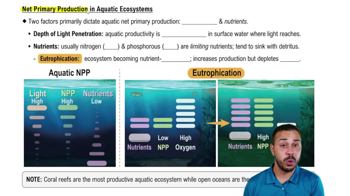What two conditions must be present for osmosis to occur? Integral membrane proteins are anchored in lipid bilayers.
Table of contents
- 1. Introduction to Biology2h 42m
- 2. Chemistry3h 40m
- 3. Water1h 26m
- 4. Biomolecules2h 23m
- 5. Cell Components2h 26m
- 6. The Membrane2h 31m
- 7. Energy and Metabolism2h 0m
- 8. Respiration2h 40m
- 9. Photosynthesis2h 49m
- 10. Cell Signaling59m
- 11. Cell Division2h 47m
- 12. Meiosis2h 0m
- 13. Mendelian Genetics4h 44m
- Introduction to Mendel's Experiments7m
- Genotype vs. Phenotype17m
- Punnett Squares13m
- Mendel's Experiments26m
- Mendel's Laws18m
- Monohybrid Crosses19m
- Test Crosses14m
- Dihybrid Crosses20m
- Punnett Square Probability26m
- Incomplete Dominance vs. Codominance20m
- Epistasis7m
- Non-Mendelian Genetics12m
- Pedigrees6m
- Autosomal Inheritance21m
- Sex-Linked Inheritance43m
- X-Inactivation9m
- 14. DNA Synthesis2h 27m
- 15. Gene Expression3h 20m
- 16. Regulation of Expression3h 31m
- Introduction to Regulation of Gene Expression13m
- Prokaryotic Gene Regulation via Operons27m
- The Lac Operon21m
- Glucose's Impact on Lac Operon25m
- The Trp Operon20m
- Review of the Lac Operon & Trp Operon11m
- Introduction to Eukaryotic Gene Regulation9m
- Eukaryotic Chromatin Modifications16m
- Eukaryotic Transcriptional Control22m
- Eukaryotic Post-Transcriptional Regulation28m
- Eukaryotic Post-Translational Regulation13m
- 17. Viruses37m
- 18. Biotechnology2h 58m
- 19. Genomics17m
- 20. Development1h 5m
- 21. Evolution3h 1m
- 22. Evolution of Populations3h 53m
- 23. Speciation1h 37m
- 24. History of Life on Earth2h 6m
- 25. Phylogeny2h 31m
- 26. Prokaryotes4h 59m
- 27. Protists1h 12m
- 28. Plants1h 22m
- 29. Fungi36m
- 30. Overview of Animals34m
- 31. Invertebrates1h 2m
- 32. Vertebrates50m
- 33. Plant Anatomy1h 3m
- 34. Vascular Plant Transport1h 2m
- 35. Soil37m
- 36. Plant Reproduction47m
- 37. Plant Sensation and Response1h 9m
- 38. Animal Form and Function1h 19m
- 39. Digestive System1h 10m
- 40. Circulatory System1h 49m
- 41. Immune System1h 12m
- 42. Osmoregulation and Excretion50m
- 43. Endocrine System1h 4m
- 44. Animal Reproduction1h 2m
- 45. Nervous System1h 55m
- 46. Sensory Systems46m
- 47. Muscle Systems23m
- 48. Ecology3h 11m
- Introduction to Ecology20m
- Biogeography14m
- Earth's Climate Patterns50m
- Introduction to Terrestrial Biomes10m
- Terrestrial Biomes: Near Equator13m
- Terrestrial Biomes: Temperate Regions10m
- Terrestrial Biomes: Northern Regions15m
- Introduction to Aquatic Biomes27m
- Freshwater Aquatic Biomes14m
- Marine Aquatic Biomes13m
- 49. Animal Behavior28m
- 50. Population Ecology3h 41m
- Introduction to Population Ecology28m
- Population Sampling Methods23m
- Life History12m
- Population Demography17m
- Factors Limiting Population Growth14m
- Introduction to Population Growth Models22m
- Linear Population Growth6m
- Exponential Population Growth29m
- Logistic Population Growth32m
- r/K Selection10m
- The Human Population22m
- 51. Community Ecology2h 46m
- Introduction to Community Ecology2m
- Introduction to Community Interactions9m
- Community Interactions: Competition (-/-)38m
- Community Interactions: Exploitation (+/-)23m
- Community Interactions: Mutualism (+/+) & Commensalism (+/0)9m
- Community Structure35m
- Community Dynamics26m
- Geographic Impact on Communities21m
- 52. Ecosystems2h 36m
- 53. Conservation Biology24m
24. History of Life on Earth
History of Life on Earth
Problem 4
Textbook Question
Ancient photosynthetic prokaryotes were very important in the history of life because they
a. Produced the oxygen in the atmosphere.
b. Are the oldest-known archaea.
c. Were the first multicellular organisms.
d. Showed that life could evolve around deep-sea vents.
 Verified step by step guidance
Verified step by step guidance1
Understand the significance of ancient photosynthetic prokaryotes: These organisms were among the first to perform photosynthesis, a process that converts light energy into chemical energy and releases oxygen as a byproduct.
Recall the role of photosynthesis in Earth's history: Photosynthesis by ancient prokaryotes, such as cyanobacteria, led to the accumulation of oxygen in the atmosphere, a phenomenon known as the Great Oxygenation Event.
Eliminate incorrect options: Option b ('oldest-known archaea') is incorrect because photosynthetic prokaryotes like cyanobacteria are not archaea but bacteria. Option c ('first multicellular organisms') is incorrect because these prokaryotes are unicellular. Option d ('life evolving around deep-sea vents') is unrelated to photosynthesis.
Focus on the correct option: Option a ('produced the oxygen in the atmosphere') aligns with the historical importance of photosynthetic prokaryotes in oxygenating Earth's atmosphere.
Conclude the reasoning: Ancient photosynthetic prokaryotes were crucial for enabling aerobic life forms to evolve by increasing oxygen levels in the atmosphere, transforming Earth's environment.
 Verified video answer for a similar problem:
Verified video answer for a similar problem:This video solution was recommended by our tutors as helpful for the problem above
Video duration:
1mPlay a video:
Was this helpful?
Key Concepts
Here are the essential concepts you must grasp in order to answer the question correctly.
Photosynthesis
Photosynthesis is the process by which organisms, primarily plants and certain prokaryotes, convert light energy into chemical energy, using carbon dioxide and water to produce glucose and oxygen. This process is crucial for life on Earth as it forms the base of the food chain and contributes to the oxygen content of the atmosphere.
Recommended video:
Guided course

Pigments of Photosynthesis
Oxygen Production
Ancient photosynthetic prokaryotes, such as cyanobacteria, played a pivotal role in producing oxygen during the Great Oxygenation Event. This increase in atmospheric oxygen allowed for the evolution of aerobic organisms and significantly changed the planet's environment, making it more conducive to complex life forms.
Recommended video:
Guided course

Primary Production in Aquatic Ecosystems
Evolution of Life
The evolution of life on Earth is marked by significant milestones, including the emergence of prokaryotic life forms. These organisms laid the groundwork for more complex life through processes such as natural selection and genetic variation, ultimately leading to the diversity of life we see today.
Recommended video:
Guided course

Characteristics of Life
Related Videos
Related Practice
Textbook Question
1616
views


